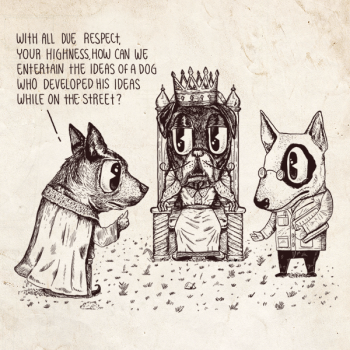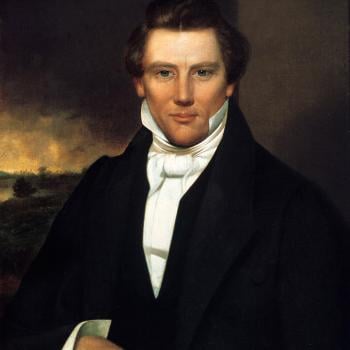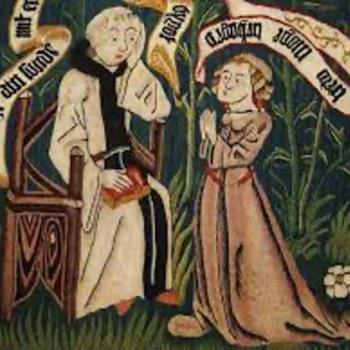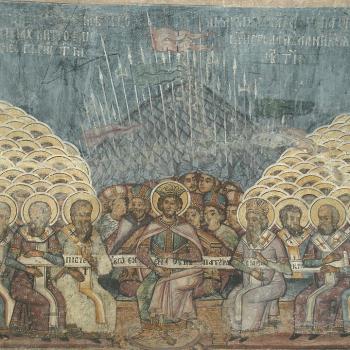Why have white evangelicals had a hard time embracing the call for social justice? In previous posts, I have looked at some likely explanations – race, region, and evangelicalism’s individualistic theology, among others. But in today’s post, I want to look at an explanation that may seem a little less obvious but which I think also plays a factor: white evangelicals’ theological view of the church. Perhaps a recovery of a biblical model of the church will be the first step in equipping evangelicals to think about sin, salvation, and justice in corporate, rather than merely individualistic, terms.
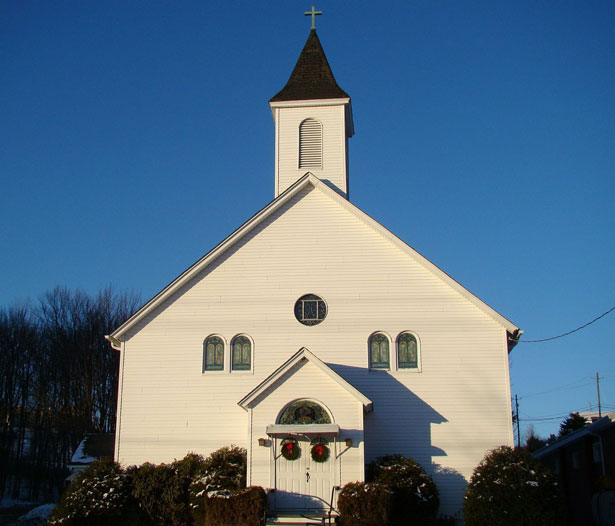
White evangelical theology and practice have long deemphasized the local church, denominational structures, and even the universal church in ways that are at odds with most other ecclesiastical theologies in Christian history. Before the sixteenth-century Protestant Reformation, the Christian church in both its eastern and western variants was inseparable from the Christian life, because the church at the universal level was the guardian of Christian doctrine and at the parish level was the administrator of sacraments that were essential to the salvation of each individual soul. The phrase “No salvation outside the church,” which probably originated with the third-century Christian bishop Cyprian, was repeated in various forms over the next millennium by church leaders in both the East and the West, and generally linked to the church’s sacramental system. As a result, nearly every Christian thought of Christianity as a life lived in community. Even most of the monastics (at least after Benedict) were living life in community, and were accountable to the rules and supervision of that community. Because the spread of Christianity came to mean, in the world of late antiquity and the Middle Ages, the conversion of an entire community or geographic region, the lines between the church and the community became so blurred as to be almost unrecognizable.
The Protestant Reformation challenged the traditional relationship between the Christian and the larger Christian church by locating the point of salvation not in a sacrament but in the individual believer’s faith and by making the making the authority of the church to determine Christian doctrine distinctly subservient to the written word of God, which they believed all Christians should read for themselves. Yet this new individualism, as potentially radical as it might have been, was also tempered by a continued role for the church in shaping the lives of Christians through the ministry of the word and sacraments and through the power of certifying who was or was not in communion with God. Even the most radical of the Reformers – the Anabaptists – had a strong vision of a Christian community that could (and did) exercise church discipline and require people to live by certain standards in order to remain in fellowship with that community.
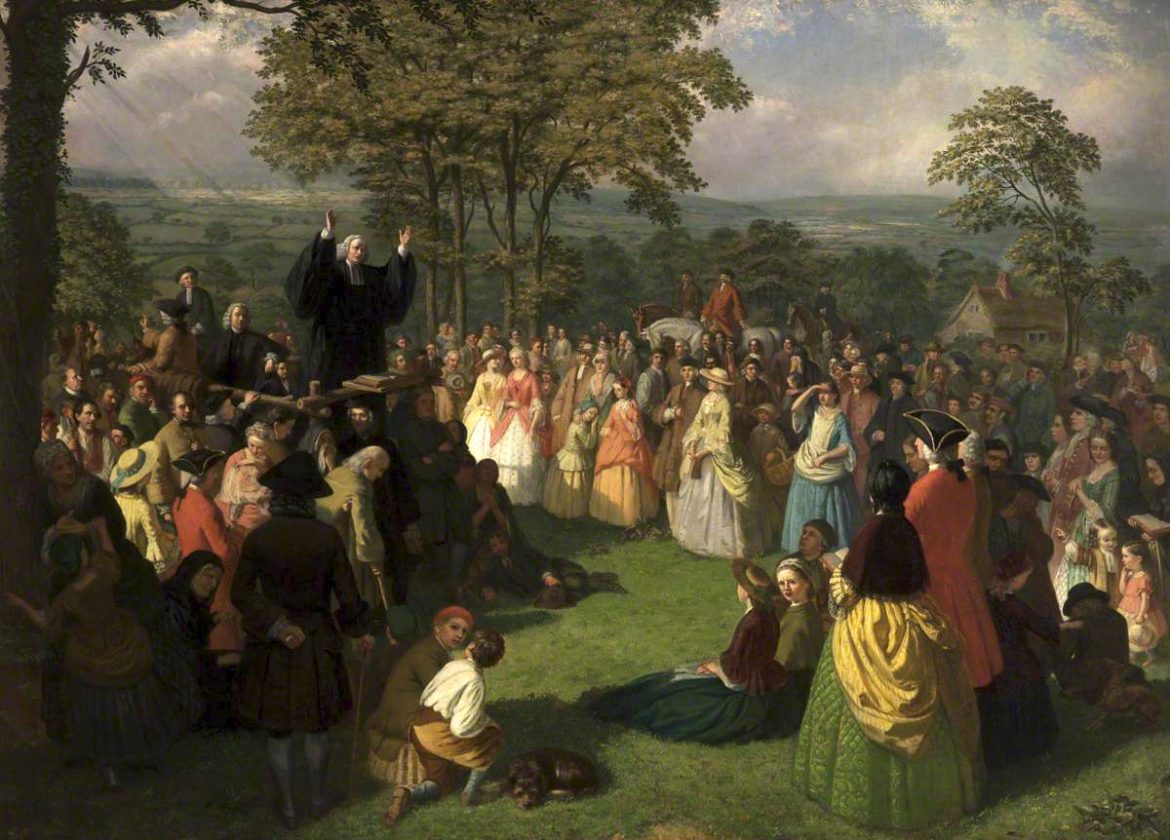
The eighteenth-century evangelical emphasis on regeneration through an individual encounter with the Holy Spirit apart from a church community presented a more radical challenge to the traditional authority of Christian churches. To be sure, most evangelicals continued to go to church. But from the beginning of the evangelical movement in the First Great Awakening of the eighteenth century, evangelicalism always had an anticlerical dimension and a suspicion of established church authority. If a Christian’s initial experience of salvation came not through baptism but through a direct encounter with the Holy Spirit that could take place as easily outside the church as within, and if the continued communion with God came through the direct words of scripture that did not depend on any outside authority for their interpretation, any role that the church might play in the development of a Christian life was no more than supplemental. For that reason, the most influential shapers of Christian life and practice in American evangelicalism have often been peripheral to the organized church at either the denominational or congregational level.
Here’s a quick test of this phenomenon: Make a list of the ten most influential American evangelicals of the nineteenth and twentieth centuries – the sort of people that would have to be mentioned in any historical survey of American religion taught at an evangelical Christian college. Who is on your list? Fannie Crosby? Dwight L. Moody? Billy Graham? Regardless of exactly which figures you named, my guess is that if your list is anything like mine, most of those people had very little accountability to a denominational structure and, in at least a few cases, only a limited connection to a local congregation. And in nearly every case, their influence probably came mainly through what they did outside the church rather than within it – whether that activity was hymn-writing, itinerant evangelism, radio or television preaching, or starting an independent Christian college or parachurch ministry.
As a result, I doubt whether very many evangelicals outside of a few small confessional subgroups within the tradition have had a very a strong sense of living in covenant community through the church – a sense that the seventeenth-century New England Puritans had, but which most American evangelicals lost in the eighteenth century and never regained. And as a result, when evangelicals have thought of issues of social sin and justice, they have often envisioned both those problems and their solution as taking place outside the church. With their individualistic theology that deemphasizes the doctrine of the church as a covenant community, they have thought of the solution to social sins as either a private, individual decision (such as a personal renunciation of racism, for example) or as a matter of public regulation of individual behavior (such as restrictions on abortion). In neither case is the church involved except perhaps as a platform for mobilizing individuals or for lobbying for public change.
This is almost equally true of much of American mainline Protestantism, which also lacks a strong theology of the church (which is perhaps not surprising, since most contemporary American mainline Protestant denominations are the theological descendants of churches that were evangelical in the early nineteenth century and then liberalized as they adopted the Social Gospel sometime after the Civil War). If contemporary evangelicals err by being too individualistic without regard for the church as a covenant community, mainline Protestants have erred by a universalistic understanding of humanity that disregards the theology of covenant community altogether and thinks of the world as their church. The organized church is still useful for providing denominational structures and the rhythms of liturgy, but mainline Protestant universalistically-oriented theology does not provide the framework to think of a church as ultimately much more than a voluntary association. Ever since the 1960s, liberal Protestants have tended to see much of the energy for social justice as coming from outside the church – first with the ecumenical civil rights movement that they believed came from grassroots organizations rather than denominations or church structures, and then with the antiwar movement, second-wave feminism, the campaign for LGBTQ rights, and other social justice campaigns. At best, the church can merely join in these movements and offer a voice in support of hope and justice. But mainline Protestant ministers generally see their task as participants in a larger interreligious or partly secular coalition rather than as models of a distinctive brand of social justice that only the church can provide.

African American Protestants, by contrast, have generally had a stronger view of the church, because for them, the church has been a refuge from racist oppression and the injustices of life in a way that it has not been for most white Protestants. Perhaps it’s not surprising, then, that Black Protestants today attend church more often than white evangelicals, let alone members of white mainline denominations. And perhaps it’s also not surprising that a Black church tradition that has modeled social justice within has also been very effective in extending its call for social justice to the larger community.
Today, though, a few white Protestant Christian theologians, especially from the Reformed tradition, are offering an alternative model of social justice that makes the practices within God’s covenant community central to the entire enterprise. One of these theologians is Richard Hays, whose The Moral Vision of the New Testament offers a model of justice that is focused on making the church a countercultural model of Jesus’s teachings among God’s covenant people. Hays is sharply critical of attempts by white Christian conservatives to make political platforms of scriptural teachings on marriage or abortion. But he also believes that the church can play a vital role in modeling scriptural teachings on human life, marriage, and a host of other issues within the context of a covenant community.
If we understand the church not merely as a voluntary association of believers but as the continuation of God’s called, covenant people that began with Abraham and has continued to the present, we will see the purpose of the church as being the central participant in God’s reversal of the effects of the fall and the conduit through which God sends his light of blessing to the whole world. Because it consists of the covenant people of God, the church is an outworking of God’s plan for the renewal of creation – a process that will culminate in the new heavens and new earth, when all of God’s covenant people will realize the blessing of the perfect society for which they have been longing. But in the meantime, the church is not called primarily to lobby for social justice or call others to social justice (though both, I think, are part of the church’s mission) but to be the model for social justice in contrast to the world. If this sounds strangely similar to the Sermon on the Mount or some of the exhortations for Christian living in the New Testament epistles, that’s probably not a coincidence.
To do this, the church will have to emphasize the obligations of faithful, obedient living in a covenant community in which all people – both lay members and ordained clergy – are held accountable to biblical standards of covenant life, with equal measures of grace and discernment. The covenant community will be a witness for family values by the way that covenants within marriage are honored. It will be a witness against racism in the way that racial minorities are promoted to positions of senior church leadership and given opportunities to guide predominantly white churches in repenting of systemic racial injustice and weeping with those who are experiencing continued discrimination and assaults on their lives. It will be a witness for peace in the way in which it solves conflict biblically and self-sacrificially, and it will be a witness against abortion in the way in which it supports members who are adopting children or carrying crisis pregnancies to term. It will be a witness of concern for the poor through its members’ radical generosity, and it will be a witness of concern for its community by the way in which it interacts with its neighbors. It will be a witness of love for children in the way in which it seeks to protect and nourish every child in its midst and support families that are raising their own biological or adopted children in the Lord or providing foster care for others. It will be a witness for the value of women and men in the way in which it listens to women and encourages all people in covenant community to fully use their God-given gifts both inside and outside of the church in ways that affirm God’s original purpose for the creation of men and women. It will be a witness for biblically shaped justice in sexuality and gender roles in the way in which it strives to honor God’s purposes for marriage and live out the radical countercultural implications of biblical teaching in these areas. It will be a witness of compassion and grace in the way in which it comes alongside believers from every imaginable background who are struggling with every imaginable sin, and helps them fan into flame the Spirit’s work in their life. And it will be a witness to the power of humility and repentance when it consistently turns to Christ and seeks to correct the injustices that it commits whenever it fails to fully live up to its covenant standards in these areas.
If the church becomes the model of this sort of gospel witness, the social justice modeled in the church will naturally spill out into the voting booth and society. If a church is serving as a refuge for undocumented immigrants and assisting them with their legal and financial needs, it’s not likely to become a bastion of anti-immigrant xenophobes. If a church is taking every possible safeguard to guard against sexual abuse in its midst and is making every effort to listen to sex abuse victims and protect them from further injustice, it’s not likely to try to make excuses for politicians who are credibly accused of this crime. If a church is affirming the value of children’s lives both before and after birth in its actions, it’s not likely to produce voters who think of abortion as a morally neutral decision. Instead, the attitudes and behaviors that church members learn in their practices within the covenant community will shape all of their interactions with people outside that community.
So, if we want a change in the nation, maybe we can start by modeling that change in our churches. But to do that, we’ll first need an evangelical commitment to the church that historically has been lacking.




